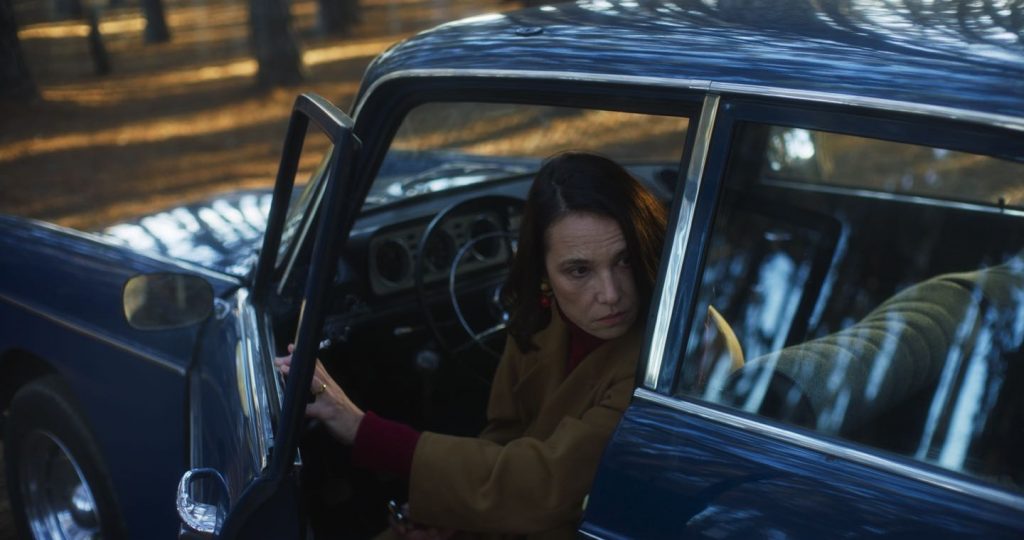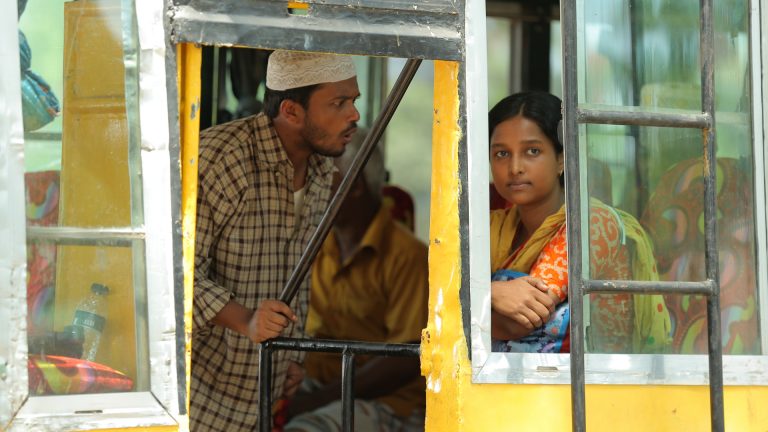In Manuella Martelli’s 1976 or Chile ’76, Carmen remodels her summer house in Las Cruces while her husband works as a doctor in Santiago’s capital. She is occasionally visited by her husband, children, and grandchildren at the summer house but mostly stays alone with her maid, Estelita. She goes about her day carrying out her role as a homemaker and monitor, directing the renovation and interior designing of her summer house and occasionally taking up the role of a ‘literature teacher’ reading books for the blind people in her area.
Checkout our complete coverage of the 2022 International Film Festival of Kerala
Pent up in her upper-class existence, occupied with choosing colors to paint her house, she, along with the rest of her family, is unaware of the political turmoil her country faces under the brutal and bloody regime of Augusto Pinochet. When the former red cross member Carmen tends to the wounds of a ‘common criminal,’ Elias, upon the request of the family priest, lines between comfort and horror are skewered as she gets caught between healing a political rebel and evading Pinochet’s militants.
The film follows Carmen’s political awakening as she recognizes the privileged yet alienated existence she experiences from the rest of the Chilean population as a result of her upper-class beingness and marriage to a Pinoche sympathizer and simultaneous paranoia at the constant dread of being caught.
Carmen is a character undergoing constant growth throughout the narrative. Once desiring to be a doctor but turned down by her conservative father, she is shown to live a confined upper-middle-class life devoid of meaning. When presented with the opportunity to demonstrate the skills she picked up as a Red Cross worker years ago, she believes she has the opportunity to contribute something to the world beyond her parochial role as a wife and mother. However, despite later realizing that she was treating an individual subject to government persecution, she continues treating him as she starts believing in their cause. She eventually tries to initiate dialogue with Elias’ comrades and formulate a plan to safely transfer him to them. These actions depict how she grows out of her gendered confines and her class contours, thereby shedding the self-dawn apolitical veil and taking a dissenting stance against the tyrannical oppression of the Pinochet regime.
One of the most captivating aspects of the film is how it conveys violence in silence. Despite being a period film set in the background of the bloodstained regime of Pinochet, the film does not show any visual gore besides a single bullet wound. However, numerous hints of kidnappings, killings, dead bodies, and oppression are peppered throughout the narrative. In the very opening sequence of the film, a woman is kidnapped as her screams are heard, but the action is not shown; a dead body is found on the beach but is shown in the distant background and therefore blurred almost whenever Carmen’s property is searched and left in a mess, but no action is shown of the search happening.
The film makes audiences feel that Pinochet is right on the heels of Carmen but misses the last bit of conclusive evidence. The film constantly holds information back from the audience as well through this refraining from showing action. Eventually, we are not even shown the action of Elias being caught or if he is dead or alive. There is constant dread as the film moves on from its initial drama to a political thriller.
Similar to not depicting violence, the film also contextualizes the totalitarian characteristics of Pinochet’s regime as well as the dissent against it without ever depicting it directly but repeatedly alluding to it. Audiences are slowly given snippets to piece together the political atmosphere backgrounding the events of the film. The discussion between the workers at Carmen’s house on the unexplained absence of acquaintances, the family priest confessing of how he had to turn over kids he was sheltering, the reports on the increasing number of bodies found at sea, the propaganda telecasts of Pinochet via television, etc., all indicate how rooted Pinochet’s clutch was in the public and personal life of Chilean citizens. The film provides information to piece together the political turmoil characterizing the film at the same rate as Carmen’s political awakening, allowing audiences a more empathetic character study.
With the small runtime it has, the screenplay holds the action tightly together and personifies the suffocation of Carmen. The vibrant yet eerie sound design perfectly complements Carmen’s paranoia and anxiety. The low saturated grading also assists in informing audiences of the apparent class distinction through the clothes that Carmen wears and how they are brighter when compared to the clothes other background characters seem to be wearing. However, while technically conscious in many departments, the film seems to lack a more layered plot as it mostly presents itself as a character study of political awakening but does not push for any real revolutionary initiations and feels self-contained. Nonetheless, 1976’s iteration of Pinochet’s regime through the dissenting lens of Third Cinema provides a visceral and gripping account of revolutionary cinema but still leaves a bit more to be desired.


![Revisiting 27 Down [1974] On MUBI: Some Journeys Linger On In Our Minds](https://79468c92.delivery.rocketcdn.me/wp-content/uploads/2020/10/27-Down-768x403.jpg)


![Two Gods [2021] Review: A gracefully handled documentary about a casket maker and his prodigies](https://79468c92.delivery.rocketcdn.me/wp-content/uploads/2021/06/Two-Gods-1-768x432.jpg)

